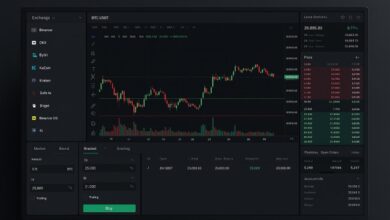Balancing Speed and Resilience: The Entrepreneur’s Guide to Riding Market Waves

Entrepreneurs face a strange paradox: move too slowly and miss the opportunity; move too fast and risk burning out or making a poor decision. Whether launching a new product, reacting to consumer feedback, or navigating economic uncertainty, the ability to balance speed with resilience is becoming the cornerstone of modern business success. Interestingly, the same dilemma plays out in the world of investing. When evaluating the pros and cons of swing trading, investors learn to make swift decisions while avoiding impulsivity. Entrepreneurs, in many ways, must master the same dance.
This article explores how you, as a business leader or aspiring founder, can embrace this dual mindset: moving fast when it counts, but staying grounded through turbulence. In an age where markets change with a single tweet, this balance isn’t optional, it’s essential.
The Speed Trap: Why Acting Fast Isn’t Always Smart
Speed is sexy in business. You hear about startups that pivoted overnight and made millions. You see influencers launching viral products within days. But what you don’t see is the churn, the burnout, and the avoidable mistakes that came from acting without a plan.
Reacting too quickly to trends, customer feedback, or competitor moves can lead to:
- Miscalculated strategies: Changing your business model or offer based on short-term feedback can erode brand identity.
- Overextension: Moving fast often means spreading thin, launching new products or campaigns without the systems to support them.
- Loss of core values: In the rush to innovate, businesses may forget what made them trusted in the first place.
Entrepreneurs need to understand that while the market rewards boldness, it punishes recklessness. Even in swing trading, where timing is critical, success hinges on strategy, not speed alone.
The Resilience Factor: Why Slowing Down Can Protect Long-Term Vision
If speed is about reacting, resilience is about withstanding. It’s the quality that keeps your business upright when the market dips, a product flops, or a competitor suddenly goes viral.
Resilience involves:
- Clear decision-making under pressure
- Emotional detachment from short-term failures
- The discipline to stick to a roadmap even when distractions arise
According to the Harvard Business Review, resilient leaders create organizations that are more adaptive, less reactive, and ultimately more innovative. It’s not about being slow, it’s about moving forward with intention.
Building resilience might mean pausing a launch until the infrastructure is in place or saying no to trends that don’t align with your long-term goals. It’s not glamorous, but it works.
How to Develop Market Reflexes (Without Losing Your Mind)
The key is not to choose between speed and resilience but to know when to switch gears. Here’s how to do it:
1. Set Anchored Goals
Your long-term goals are your anchor. If a decision doesn’t bring you measurably closer to those goals, it probably isn’t urgent, no matter how trending it seems.
For example, if your goal is to grow recurring revenue, a flashy one-time product drop might attract attention but drain resources better used elsewhere.
2. Use Data as a Brake (and an Accelerator)
Data is your best tool for timing decisions. Before reacting to a dip in sales, ask:
- Is this seasonal?
- Is it part of a broader trend?
- Is it statistically significant?
Similarly, if you notice a consistent rise in demand for a service you don’t yet offer, that’s a sign to speed up development.
3. Apply the “Swing Trade” Mentality to Business Moves
Swing traders aren’t day traders. They don’t make impulsive buys and sells. They study the market, identify patterns, and act decisively when the conditions are right. Entrepreneurs can do the same:
- Watch the market: customer behavior, competitor positioning, and economic signals
- Enter with intention: don’t build or launch anything just to “do something”
- Exit gracefully: if a strategy isn’t working, move on without emotional baggage
In both trading and entrepreneurship, the skill lies in timing, not luck.
Recognize False Alarms: Not Every Dip Requires a Pivot

One of the most damaging things entrepreneurs can do is react to temporary market noise. A few bad reviews? A sudden drop in site traffic? A trending competitor on TikTok? These can spark panic, but often, they’re blips, not signs of doom.
Having the discipline to wait it out is a rare skill. Just as an experienced trader won’t sell the moment a stock dips, a seasoned business owner doesn’t scrap a strategy because of one underperforming week.
Know When to Hit the Gas
There are moments, however, when fast action makes the difference between thriving and barely surviving. For instance:
- A sudden media opportunity that aligns perfectly with your brand
- A competitor exits the market
- A loyal influencer or customer offers to collaborate
- A market trend aligns perfectly with your product roadmap
These are your green lights. When they appear, be ready to move, but only if you’ve prepared.
This preparation means:
- Having a reserve of funds or resources
- Maintaining flexible infrastructure (e.g., scalable platforms)
- Empowering your team to act without endless approvals
Cultivating a Culture of Strategic Agility
Your internal culture determines how well you can execute on this balance. Create an environment where:
- Team members are encouraged to speak up with market insights
- Leadership rewards thoughtful urgency
- There are post-mortems, not blame games, when decisions misfire
This helps everyone act faster when needed, and pause when it’s smarter to wait.
When Resilience Becomes Rigidity
While it’s vital to avoid knee-jerk decisions, it’s also possible to become too conservative. Over-analysis can cause decision paralysis. If you’re always waiting for “perfect conditions,” you may never act.
This is where having a repeatable decision-making framework can help:
- Set criteria for moving forward (e.g., X number of customer requests or Y% increase in trend searches)
- Assign a timeline: if a signal persists for 3 weeks, you act
- Trust your system, even if it feels risky
Speed without resilience is reckless. Resilience without speed is stagnation. Entrepreneurs today must master the art of switching gears, advancing quickly when the moment is right, and holding steady when patience is wiser.
Learning to ride market waves doesn’t mean predicting every high and low. It means staying agile, being informed, and knowing that just like in investing, it’s often the disciplined players, not the fastest, who win in the long run.
So, whether you’re considering your next product launch, a business model tweak, or a full-scale pivot, take a moment to ask yourself: Is this a true market signal or just noise? And more importantly, are you ready to move, or wait?



